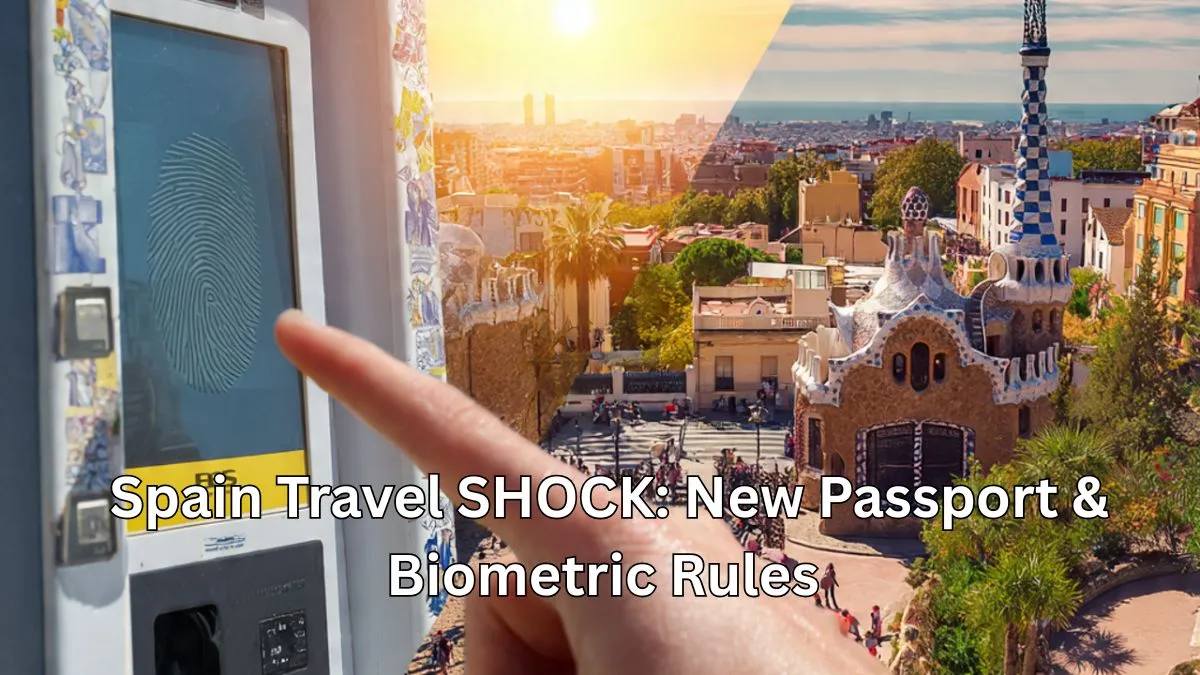Planning a trip to the sun-soaked beaches or historic cities of Spain? Here is everything you need to know about the big changes coming to border control, starting on October 12, 2025.
Travelers heading to Spain from outside the European Union (EU) are about to encounter significant updates to entry requirements. Spain, as a member of the Schengen Area, is implementing the EU’s new digital border system, which means a new process at passport control, plus a few critical reminders about your existing travel documents and finances.
1. The Big Digital Overhaul: The Entry/Exit System (EES)
Starting October 12, 2025, the EU’s new Entry/Exit System (EES) will begin rolling out at Spanish external borders. This is the biggest change, as it will replace the old method of manually stamping your passport with a high-tech, digital registration.
- What it is: EES is an automated IT system that digitally registers non-EU travelers every time they cross a Schengen external border for a short stay (up to 90 days in a 180-day period).
- What you will do: When you enter and leave the Schengen area for a short visit, you will likely be required to have your fingerprints and a photo taken (biometric data) and answer a few security questions under the Schengen Border Code.
- Be Prepared for Delays: While the system is meant to be more efficient long-term, officials have warned that the initial registration process—which involves collecting your biometrics for the first time—may add a few extra minutes to your journey. It’s wise to budget more time at border control.
- Good News: The rollout will be gradual, and the new system is designed to streamline repeat visits once your data is on file.
2. The Strict 90/180-Day Rule for Visa-Free Stays
The EES is primarily designed to help enforce the existing rule for short stays in the Schengen area.
- The Limit: Non-EU citizens can travel visa-free in the Schengen area (which includes Spain) for a maximum of 90 days within any 180-day period.
- The Consequence of Overstaying: If you exceed this 90-day limit, you could face penalties, including a potential ban from re-entering Schengen countries for up to three years.
- Proof is Key: Border guards will use the new EES to digitally track your entire visit and will also continue to scrutinize passports (especially during the transition) to ensure compliance. If you live in Spain or have a long-stay visa/residence card, remember to present that document along with your passport to avoid having your short-stay limit impacted.
3. Essential Passport & Documentation Checks
While the digital system is new, the rules for your physical passport remain strict and essential for entry.
- 10-Year Rule: Your passport must have been issued less than 10 years before the day you plan to arrive in Spain. If you renewed your passport before October 1, 2018, its issue date might now be over 10 years old.
- 3-Month Validity Rule: Your passport must be valid for at least three months beyond the day you plan to leave the entire Schengen area.
- Required Documents to Show at the Border: Spanish border control may ask you to present the following:
- A return or onward ticket.
- Proof you have enough money for your stay (the required amount varies, but the current minimum is around €118 per person per day).
- Proof of accommodation (like a hotel booking confirmation, a deed for your own property, or an official invitation letter (carta de invitación) from your host if staying with friends or family).
4. Money and Other Important Reminders
Beyond entry, travelers must be aware of rules regarding cash and children.
- Cash Declaration: You must declare any cash, traveler’s cheques, or other payment methods if the value is €10,000 or more upon entry or exit.
- Minors Traveling Alone: Under Spanish law, minors (aged 17 and under) traveling without their parents or guardians may need a notarized, written permission from a parent/guardian. Always confirm with the Spanish embassy before you travel.
Conclusion
The launch of the EES marks a significant step in modernizing border security for the European Union. While it introduces a new step for first-time visitors to Spain, it promises a smoother, more efficient process for all travelers in the long run. By preparing your documents—especially checking your passport’s issue date and knowing your financial requirements—you can ensure a seamless entry to your Spanish holiday.
Affiliate Disclosure
This article may contain general travel advice. We do not receive compensation for linking to government or airline websites.
Disclaimer
Travel rules and official government advice are subject to rapid change. The information provided is based on public announcements regarding the EES rollout and standard Schengen rules as of September 2025. Travelers must always check the official government travel advice from their home country and the Spanish Ministry of Foreign Affairs, European Union and Cooperation for the most up-to-date and authoritative entry requirements before booking or departing.







